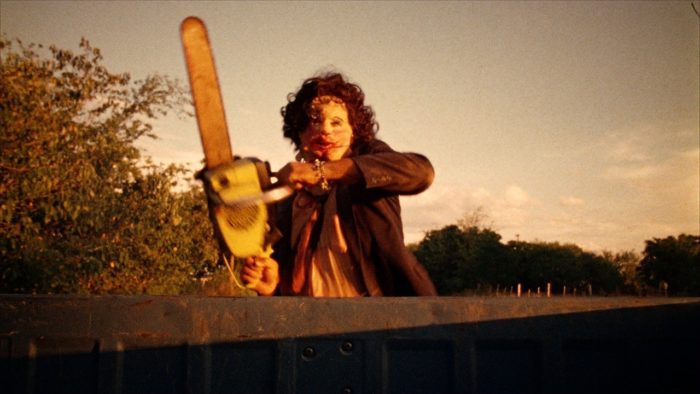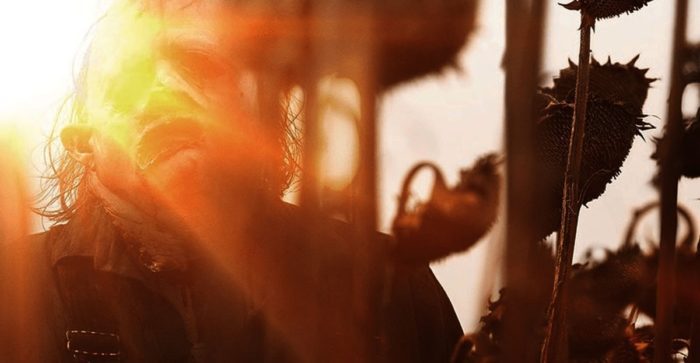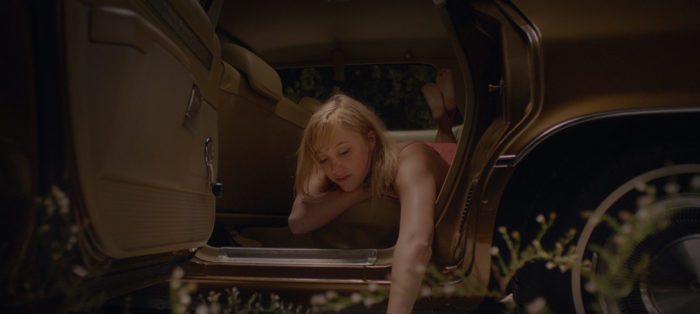They say familiarity breeds contempt, and I would say that’s true if it weren’t for the fact that there are so many horror franchises with almost double-digit numbers of entries. Horror movies and terrible sequels go hand in hand and it’s been that way for a long time. For me, the franchise I’m most familiar with is The Texas Chainsaw Massacre, and it’s been a rough time, to say the least. Outside of the original masterpiece and (maybe) the second and fourth entries, every movie has been pretty damn bad by most standards, and yet there are nine movies comprising the franchise. And today I’d like to ask the question of why that is. What is it about horror franchises that make them endure? Why do we keep going back time and time again for more when we know, deep down in our hearts, that the best parts of a given series are far in the past and are not likely to ever be topped again?

And I can only speak from my own experience with this. For me, my relationship with The Texas Chain Saw Massacre started in college. I watched the original movie with a roommate after being turned off by the title that promised gratuitous violence with little rhyme or reason. I was expecting slasher trash. What I got was a harrowing horror masterpiece, and it’s been a favorite of mine ever since. It’s intense, gritty, and puts the viewer in the situation in a way that I’ve seen few other movies ever achieve. It’s still great to this day, thanks to a setting that works no matter the time period.
It’s an awesome movie through and through, and I think part of its horrifying power is that everything feels so incidental. If the characters had never picked up the strange hitchhiker in the beginning, maybe they could have avoided their fates. Maybe if they had decided sooner that it wasn’t worth the trek down south to see Sally and Franklin’s old family place, none of them would have died. It’s a movie about the inherently chaotic nature of our world, filled with coincidences that lead to the eponymous massacre, and what’s more, we never learn the names of the vicious family that terrorizes Sally and her friends. These people are nobody, simply existing in the middle of nowhere, and that is a very scary idea to me. The idea of these borderline feral people living in forgotten corners of the world is enough to get under my skin.
So if that mystery, that ambiguity, and that coincidence is the movie’s biggest strength, what purpose is there in a sequel? What about a prequel? What good would it do to elaborate on these mysterious villains when so much of what makes them scary is the fact that they could be anybody? From an artistic perspective, there is no good reason to bring these characters back, to explore who they are as people, or to give them names. Sure, the first sequel is entertaining enough, but I think you’d be hard-pressed to find anyone who would consider it scary. But everything after that is either an inferior rehash of the original, a pointless attempt to explain the backstory behind the events of the original, or a mixture of both. Sure, artistically the original stands on its own, but unfortunately for us, money talks, which means that the sole reason any of the other films exist is purely monetary.
And sure, movies are products. They can be beautiful, moving, terrifying, hilarious, and reveal something about being human, but they do have to make money to keep the people involved employed. Whenever a movie turns a profit, there are always rumblings about a follow-up, and it’s fortunate for producers that slashers tend to be pretty cheap to make. This low-cost, high-reward model is why these movies exist at all. It doesn’t matter if the movie is good, or if it makes blockbuster levels of money because it was cheap to make. It just needs a relatively small number of people to see it for it to be a financial success, so it makes sense from a marketing perspective to attach a known name onto an otherwise bad or forgettable movie. A generic slasher may struggle to bring people in, but if it’s something they recognize, they’re more likely to see it regardless of how many times they’ve been burned in the past.

And as someone who has seen every single TCM movie, I’ve been burned many times. Many, many times. When I heard rumblings of the 2022 entry, I was morbidly curious since Fede Alvarez, who made the great Evil Dead remake as well as the awesome Don’t Breathe, was attached. I wondered if maybe there would be a little more to this entry. There wasn’t, of course. The new movie is a bland slasher with an insultingly bad script and okay gore. It’s cheap thrills that you forget about the second the credits start rolling. Sure, sometimes all you want are cheap thrills. It’s why people still want a new Friday the 13th movie even though most fans will tell you that the movies are trash (their words, not mine; I’ve only bothered with the first and fell asleep in the middle of it).
Deep down I knew that the latest entry in the TCM franchise would be yet another in a very, very long line of creatively bankrupt products, but I really was holding out hope that maybe it’d be something a little more than just a bad sequel. That’s the same thing I thought when 2017’s prequel Leatherface came out, too. I wasn’t expecting them to live up to the original, but I was at least hoping there would be some small amount of creativity or wit put into them. And here’s the thing: I recognize this impulse. I acknowledge how futile it is to be optimistic every single time a new one of these movies gets made, but I still wind up watching them anyway.
And I think for many franchises, that is the hope of the people churning out those sequels. It’s the hope that people have enough attachment to whatever movie they fell in love with that they’ll check out the new one out of morbid curiosity. We trick ourselves into thinking “This will be the one, I can feel it! This will give me the same feeling I had watching the original!” It is for this reason that I think horror fans need to accept a hard truth: we need to move on.
Talking with some horror fans in online groups, there are some people who have become disillusioned by these franchises and think that their shortcomings apply to the genre as a whole. I’ve talked with people who say that horror has been dead for decades and that the last good films in the genre were made in the 80s, and that kind of breaks my heart. With the rise of streaming and easier access to filmmaking technology, I would say we’re in the middle of something of a horror renaissance. Some of my favorite examples of the genre come from the past decade or so, and that’s because there are so many new voices adding their ideas in the mix all the time. And that’s a very good thing.
Here’s the thing about that, too: there was a time when The Texas Chain Saw Massacre was nothing more than an independent film that (rightfully) hit it big. It launched Tobe Hooper’s career that spanned decades. It changed what horror movies could be. It was a trailblazer in a lot of ways. And all of this fuss was raised around a movie that is, at the end of the day, an entirely standalone story whose power is ruined when you try to fill in the gaps. Those gaps are what makes it so damn scary, and it wasn’t until a decade after the original that a sequel was made. I try and imagine what that decade must have felt like. I try and picture a world where the original movie was left alone and not milked for the sole purpose of driving a profit.
Horror, in particular, is often best when it’s simple. It’s possible to make really intricate world-building and lore work and still be scary (see the excellent podcast The Magnus Archives for an example of this), but on the whole, some of the best instances of horror, to me, leave me with the desire to simply leave it alone. I’ve said before that It Follows is my favorite movie ever made, and after revisiting it very recently, that still holds true. I love every single thing about it. The score, the cinematography, and the ambiguity of its threat. I’ve heard rumblings that a sequel isn’t out of the question, and I can only see that ending disastrously. The threat in that movie, that of a specter of death who follows people without stopping, works because there is almost no explanation for it. It’s old, as old as humanity or maybe even time itself, and the film works because of that. It’s a somewhat goofy premise executed in an artful and masterful way, and a sequel where we would presumably learn more about this entity would only take away from its terrifying power. As a species, we are afraid of things we don’t understand. So when you take that mystery away, something that was once scary is, at the very least, understandable, which robs it of its power.

I’m glad It Follows hasn’t gotten a sequel or any other tie-in media. It works completely as an isolated horror story and we don’t need any other tales set in its universe. I wish I could say the same thing for The Texas Chain Saw Massacre. Apart from a few of the more overtly comedic entries, watching one of the many sequels simply makes one wonder why they’re bothering. Most of the time the story is paper-thin, so you can’t get invested in that. The scripts are often abysmal, filled with holes that could have been easily fixed by a competent rewrite. Oftentimes, the gore is half-assed too. All these things make me question why I even bother watching these when I could have spent my time watching the superior original, or something new and unique with real care and passion put into it.
There are, of course, some exceptions to this. From what I’ve heard, Child’s Play is still going strong, especially with the new SyFy show. The Evil Dead is pretty damn entertaining in any of its live-action incarnations, whether it’s the original, its sequels, its remake, or the television show. But I think these exceptions only prove the rule. Those franchises have people behind the scenes that care about what they’re doing and aren’t just concerned with making a buck.
Here’s the ugly truth: despite acknowledging this, I’m sure that whenever the next TCM movie rolls around, I’m going to be curious about it. I’m sure I’ll think, “Well, it can’t be that bad, can it? Maybe someone involved put a little creative spark in it.” I would bet my pay for the rest of this year that I will come away feeling like I wasted my time, but I’m still likely going to watch it. And I wish I could change that.
Thankfully, there are plenty of great new and original horror movies released every year. Enough for me to believe that my love of the genre isn’t misplaced. Enough for me to have faith that no matter how cynical the big-name franchises become, there will always be a new artist with a new vision of what horror is that will manage to scare me in new and creative ways. And I’m very grateful for that.


